
Adjustable Wire Wrapped Cocktail Ring
- Category: Contemporary
- Technique(s): Wrapping
- Skill Level: Beginner
Materials

- Lesson Quantity: 8.00 inches
- Purchase Quantity: 1.00 1FT
- Price: $3.91
- Gold Club Price: $2.93

- Lesson Quantity: 36.00 inches
- Purchase Quantity: 1.00 5FT
- Price: $6.28
- Gold Club Price: $4.71

- Lesson Quantity: 1.00 pieces
- Purchase Quantity: 1.00 each
- Price: $9.45
- Gold Club Price: $7.09

- Lesson Quantity: 1.00 pieces
- Purchase Quantity: 1.00 each
- Price: $11.55
- Gold Club Price: $8.66

- Lesson Quantity: 1.00 pieces
- Purchase Quantity: 1.00 each
- Price: $7.35
- Gold Club Price: $5.51

- Lesson Quantity: 1.00 pieces
- Purchase Quantity: 1.00 each
- Price: $6.30
- Gold Club Price: $4.73

- Lesson Quantity: 1.00 pieces
- Purchase Quantity: 1.00 each
- Price: $17.85
- Gold Club Price: $13.39

- Lesson Quantity: 1.00 pieces
- Purchase Quantity: 1.00 each
- Price: $7.35
- Gold Club Price: $5.51

- Lesson Quantity: 1.00 pieces
- Purchase Quantity: 1.00 each
- Price: $7.35
- Gold Club Price: $5.51

Tools

- G7-55
- Lesson Quantity: 1.00 pieces
- Purchase Quantity: 1.00 each
- Price: $11.95
- Gold Club Price: $8.96

- G2-1
- Lesson Quantity: 1.00 pieces
- Purchase Quantity: 1.00 each
- Price: $9.97
- Gold Club Price: $7.48

- G2-507
- Lesson Quantity: 1.00 pieces
- Purchase Quantity: 1.00 each
- Price: $32.95
- Gold Club Price: $24.71

- G2-508
- Lesson Quantity: 1.00 pieces
- Purchase Quantity: 1.00 each
- Price: $32.95
- Gold Club Price: $24.71

- PLR-487.00
- Lesson Quantity: 1.00 pieces
- Purchase Quantity: 1.00 each
- Price: $16.97
- Gold Club Price: $12.73

- MAT-620.00
- Lesson Quantity: 1.00 pieces
- Purchase Quantity: 1.00 each
- Price: $14.95
- Gold Club Price: $11.21

- Lesson Quantity: 1.00 pieces
- Purchase Quantity: 1.00 each
- Price: $170.72
- Gold Club Price: $128.04
One larger bead for center and smaller beads to surround it.
If you use one 8mm bead as the center, nine 4mm beads will be needed to surround it.
In this tutorial a 10mm gemstone bead is used as the center and eight 6mm round beads to frame it.
Two lengths of 1mm/18-gauge wire approximately 4 inches each for the base wires (0.8mm/20 gauge can be used instead.)
And approximately 36 inches of 0.4mm/ 26-gauge weaving wire.
Take two lengths of wire for the base which will form the adjustable ring shank, the length can be adjusted, but 4 inches each should be sufficient for most ring sizes.

Attach the weaving wire an inch up from the end of one of the base wires, wrap it three times over the base wire to secure.

Using wire cutters, trim off the starting tail of weaving wire and use chain nose pliers to tuck in any sharp ends.

Attach the top base wire, lining the ends up together, so that the two-wire weave starts approximately one inch along the base wires.

Any two-wire weave can be done to form the ring shank.
This tutorial shows two wraps over both base wires and two wraps on the bottom base wire.

Compress the weave with pliers to keep it neat and consistent.

Continue this weaving for approximately 12 repetitions. (This can be adjusted to cover the length of the ring band required.)
Wrap the weaving wire once over the bottom base wire so that it finishes in between the two base wires.

Add the large bead onto the weaving wire and position it into the center.

Bring the weaving wire back between the base wires and wrap over the bottom base wire once to ensure the large bead is centered and that the drill hole of the bead is at the side and can't be seen from above.

Add on all of the smaller beads onto the weaving wire.

Shape them around the central large bead by bringing the weaving wire around so that the smaller beads frame the larger bead in the center.

Wrap the weaving wire over both of the unwoven base wires twice and tuck this wire up close so that it sits under some of the beads.

Lay the weaving wire across the top of the bead cluster, next to the large central bead and positioning it in between the beads so that there are three of the beads on one side.

Bring the weaving wire back tightly around the back of the ring.

Position the wire in between the next two beads and over the other side so that it captures another three beads.

Move the wire in rotation again in between the next beads and over across the top of the ring to capture the other three beads.

Continue this all the way around the ring, bringing the wire across three beads each time.

The wire should be pulled taught to ensure it is flat between the beads.

The weaving wire will go all around the large central bead creating triangular points between each bead.

The beaded center will also become more fixed to the shank.

Once the weaving wire has been positioned in this way around all of the beads, it will bring the weaving wire back to the starting point.

Wrap the weaving wire over the two base wires.

Make the same two-wire weave along this side of the ring shank.

Remember to compress the weave and pinch in with pliers to keep the weaving wire neat.

Complete the same amount of weave repetitions as on the other side of the ring shank, wrap three times along the bottom base wire and cut off any excess weaving wire and tuck in any sharp edges.

The weaving pattern should end leaving approximately 1 inch of unwoven base wires so that it is symmetrical on each side.

Using a ring mandrel or something cylindrical that is roughly the circumference of the intended size, push the beads against it firmly and wrap the ends of the ring around the mandrel.

The wires should sit above and below each other, tightly around the mandrel to create the ring shape.

Trim off a couple of millimeters of the exposed base wire if necessary, ensuring it overlaps some of the weave from the opposite side of the shank.

Use round-nose pliers to curl in the ends of each of the base wires.

Ensure the wire ends are fully curled in on themselves so that the sit comfortably on the underside of the finger.

This part of the base wire could be bound together with weaving wire if desired, however leaving them like this will enable your ring to be adjustable and can be tightened or loosened around the finger.

Ensure the weaving wire underneath the beads is positioned tightly to the shank and between the beads, so that it cannot catch and adjust with pliers if necessary.











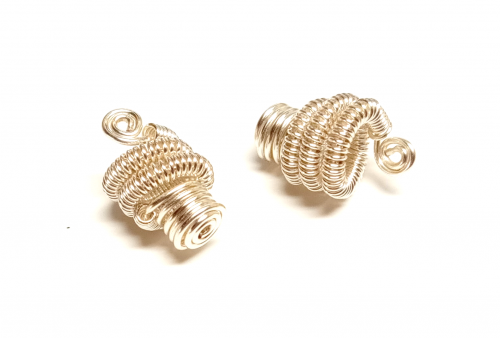
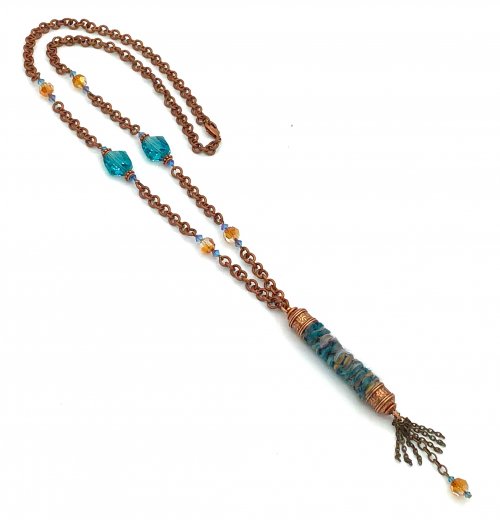

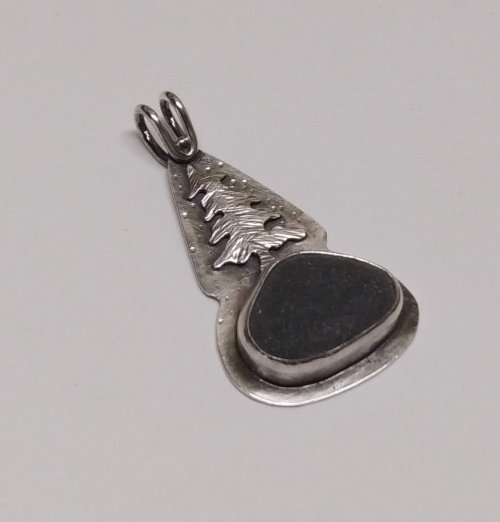
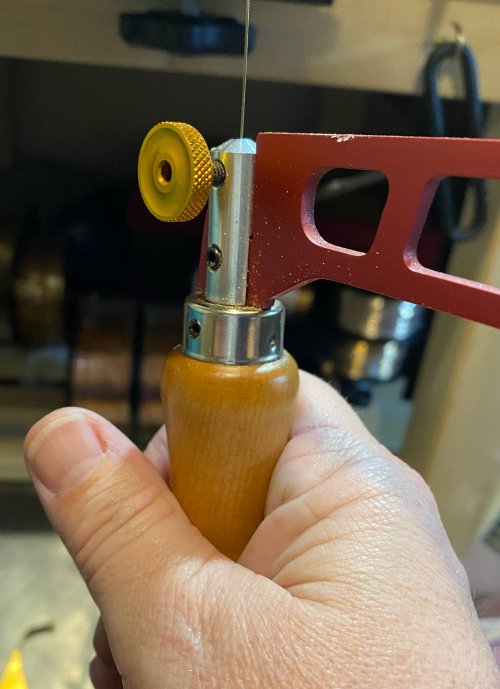
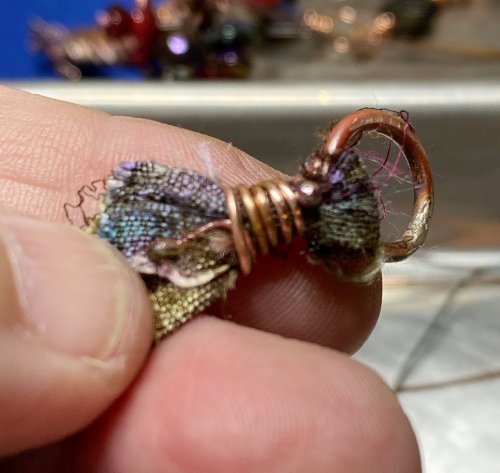
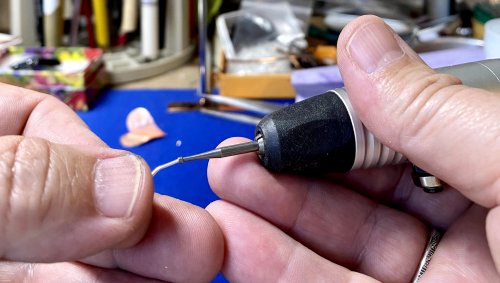
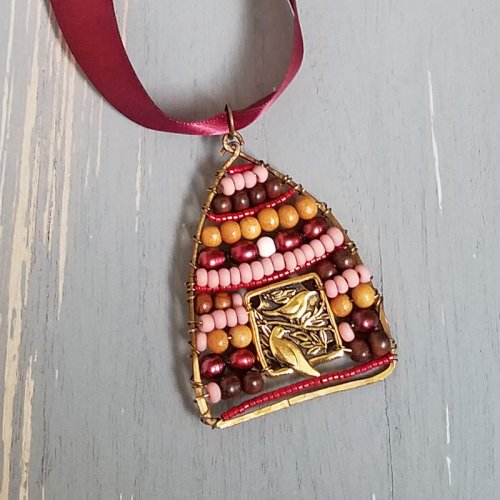
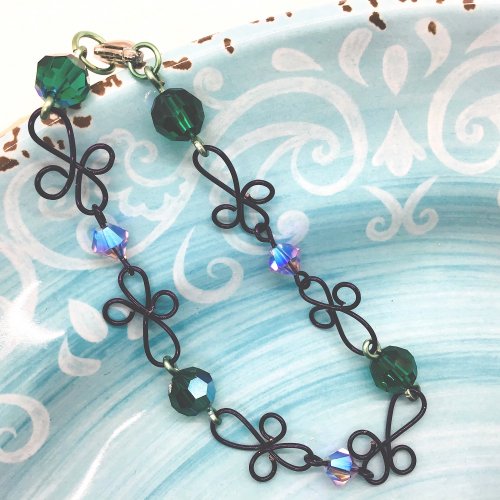

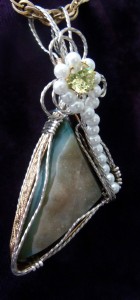
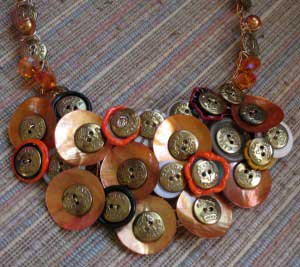
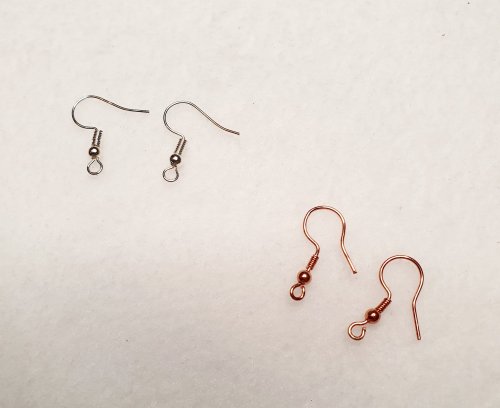 French Hook Ear Wires
French Hook Ear Wires
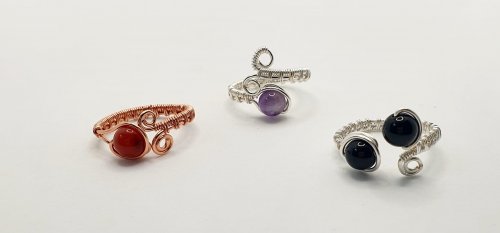 Adjustable Wire Wrapped Ring with Gemstone Bead
Adjustable Wire Wrapped Ring with Gemstone Bead
 Top Drilled Stone Pendant
Top Drilled Stone Pendant
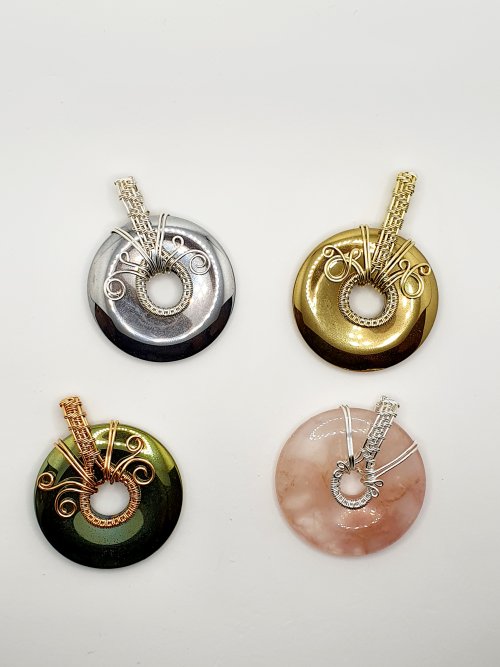 Wire Wrapped Donut Pendant
Wire Wrapped Donut Pendant
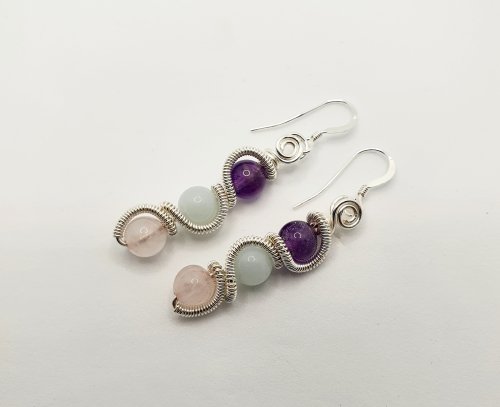 Coiled Wrap Bead Earrings
Coiled Wrap Bead Earrings
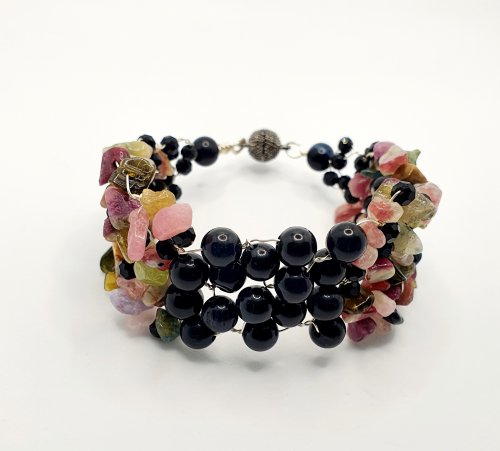 Gemstone Chip and Wire Cuff Bracelet
Gemstone Chip and Wire Cuff Bracelet
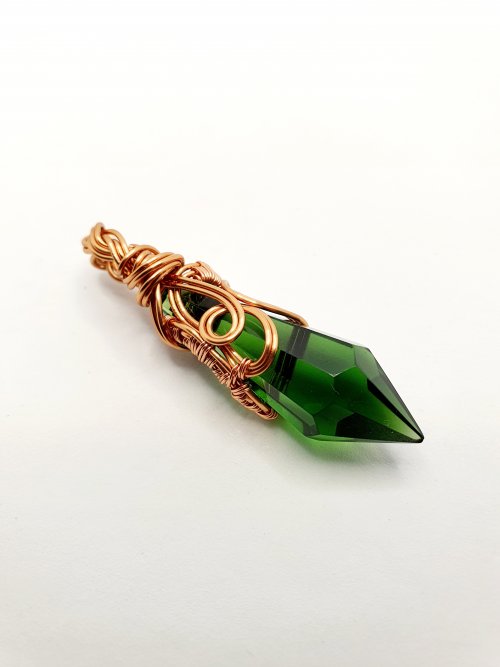 Wire Wrap a Chandelier Crystal
Wire Wrap a Chandelier Crystal
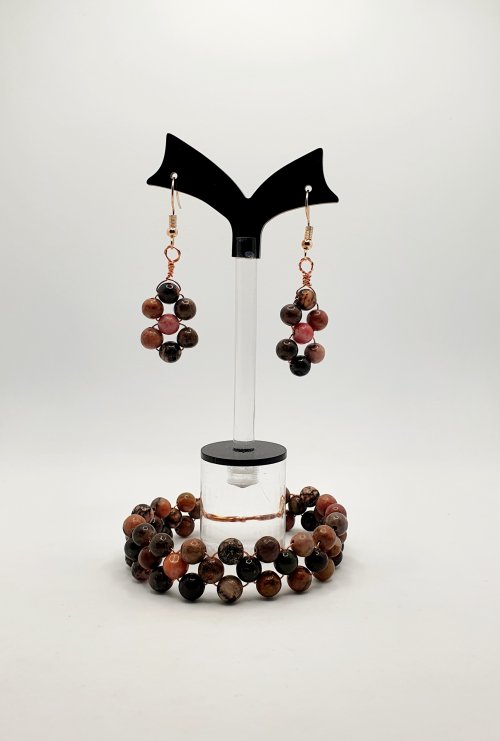 Beaded Wire Jewelry Set
Beaded Wire Jewelry Set
 Braided Wire Cuff
Braided Wire Cuff
 Classic Wrap Pumpkin Pendant
Classic Wrap Pumpkin Pendant
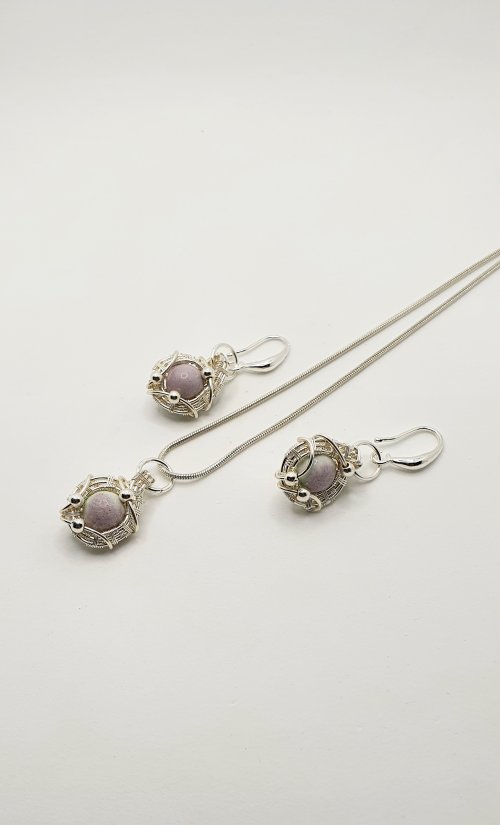 Woven Wire Pendant and Earrings Set
Woven Wire Pendant and Earrings Set
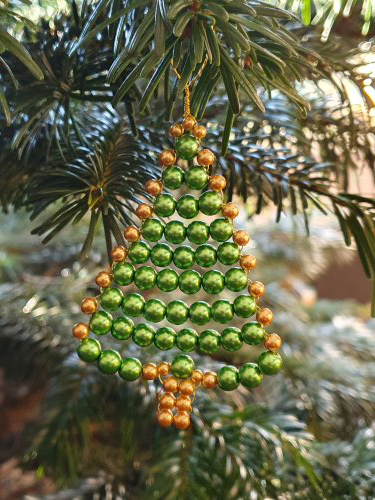 Beaded Wire Christmas Tree Ornament
Beaded Wire Christmas Tree Ornament
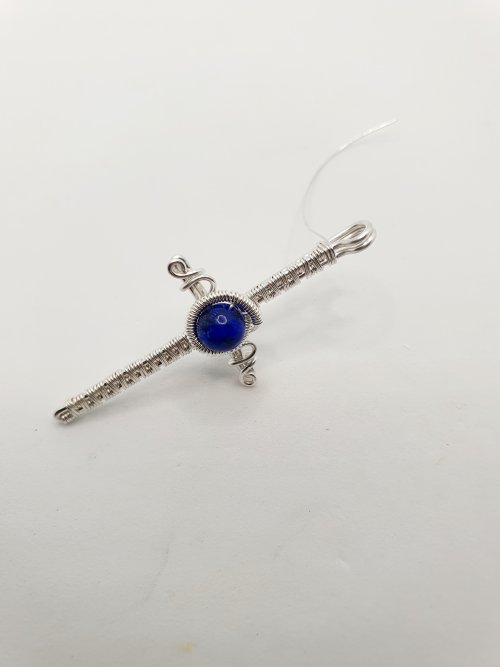 Woven Wire Cross Pendant
Woven Wire Cross Pendant
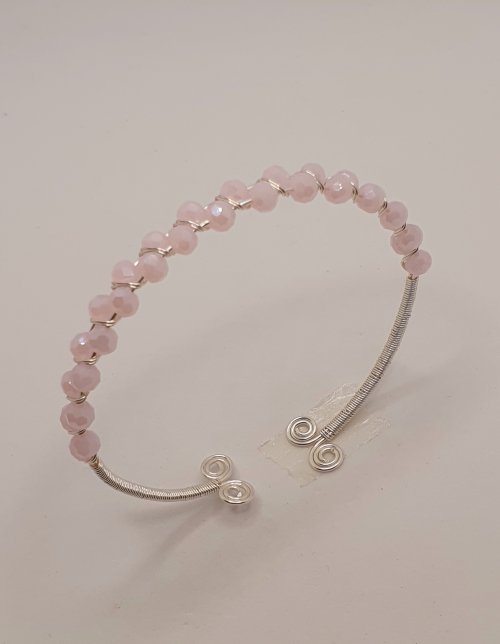 Adjustable Beaded Wire Bracelet
Adjustable Beaded Wire Bracelet
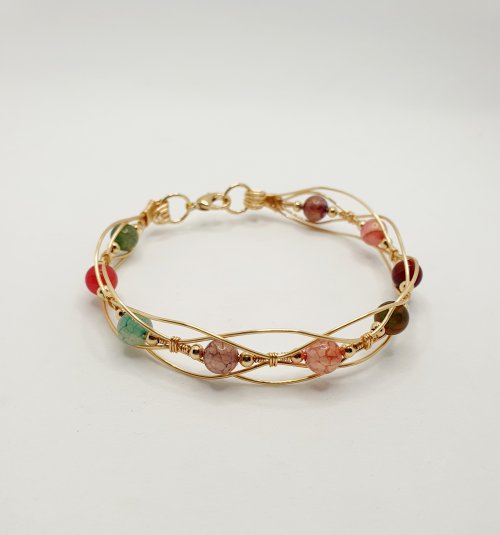 Beaded Wire Bracelet
Beaded Wire Bracelet
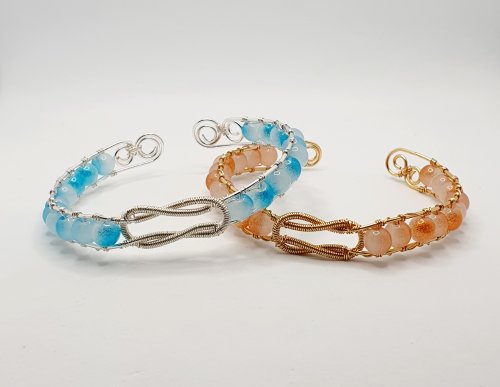 Interlocking Coil Bangle
Interlocking Coil Bangle
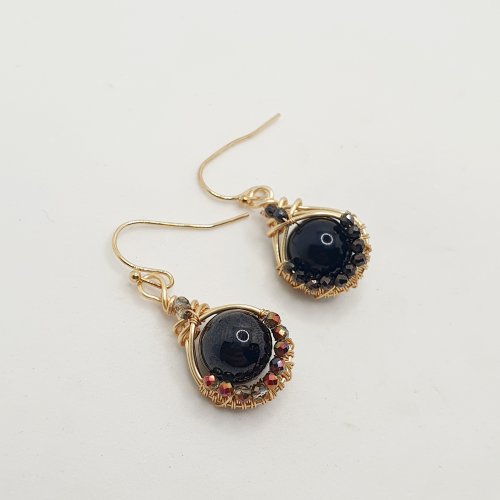 Bead and Micro-Crystal Wire Earrings
Bead and Micro-Crystal Wire Earrings
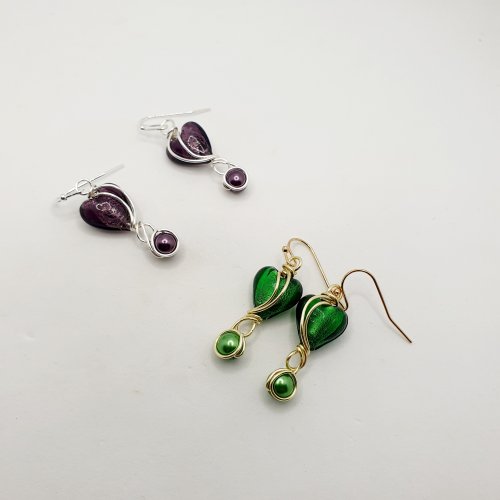 Valentine Heart Wire Earrings
Valentine Heart Wire Earrings
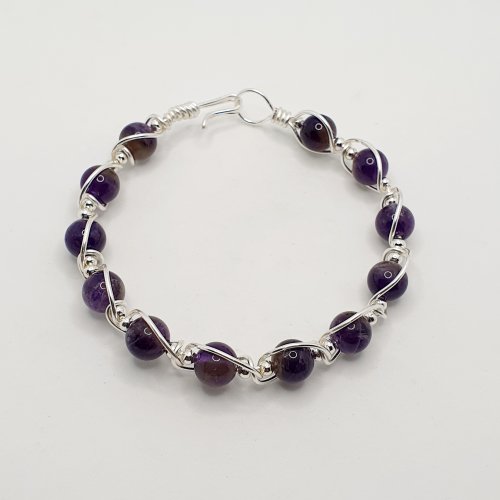 Gemstone and Spacer Bead Bangle
Gemstone and Spacer Bead Bangle
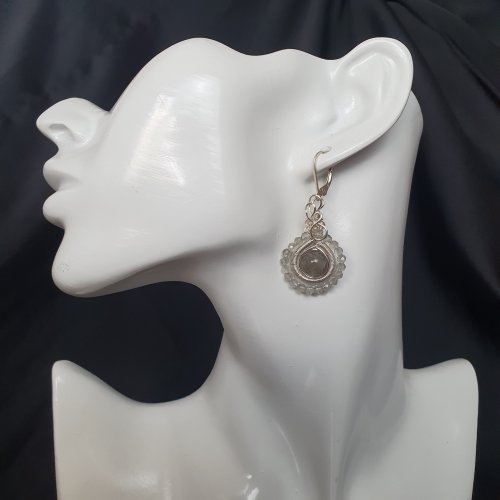 Coiled Wire Earrings
Coiled Wire Earrings
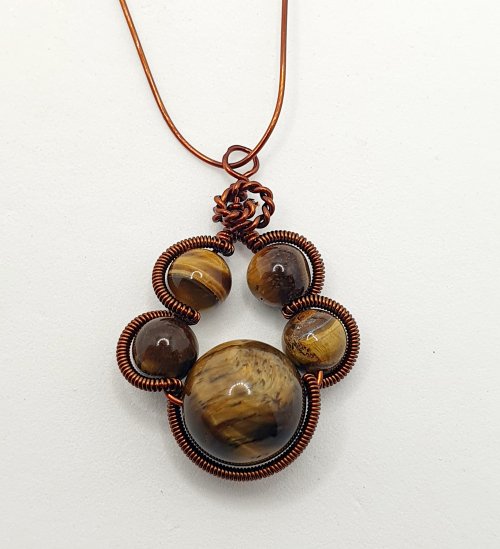 Pawprint Pendant and Earrings
Pawprint Pendant and Earrings
 Right Angle Weave Wire Earrings
Right Angle Weave Wire Earrings
 Wire-filled Heart Earrings
Wire-filled Heart Earrings
 Wire Flower Component
Wire Flower Component
 Woven Wire Wrapped Cabochon Ring
Woven Wire Wrapped Cabochon Ring
 Wire Beaded Bangle
Wire Beaded Bangle
 Beaded Coiled Wire Beads
Beaded Coiled Wire Beads
 Beaded Wire Bracelet
Beaded Wire Bracelet
 Beaded Flowery Wire Bracelet
Beaded Flowery Wire Bracelet
 Beaded Wire Cross
Beaded Wire Cross
 Wire Caged Beads
Wire Caged Beads
 Delicate Wire and Chain Bracelet
Delicate Wire and Chain Bracelet
 Bead and Wire Bracelet with Attached Clasp
Bead and Wire Bracelet with Attached Clasp
 Spiral Chain Maille
Spiral Chain Maille
 Graduated Bead Component
Graduated Bead Component
 Beaded Flower Connector
Beaded Flower Connector
 Bead and Wire Circular Component
Bead and Wire Circular Component
 Simple Beaded Bangle Bracelet
Simple Beaded Bangle Bracelet
 Channel-set Beaded Cuff Bracelet
Channel-set Beaded Cuff Bracelet
 Birds Nest Pendant
Birds Nest Pendant
 Byzantine Chainmaille Earrings
Byzantine Chainmaille Earrings
 Lotus Pendant
Lotus Pendant
 Romanov Chainmaille Pendant
Romanov Chainmaille Pendant
 Planet Jewellery
Planet Jewellery
 Herringbone Weave Connectors
Herringbone Weave Connectors
 Shoot For the Stars Earrings
Shoot For the Stars Earrings
 Chain Tassel Earrings
Chain Tassel Earrings
 Byzantine Diamond Chainmaille
Byzantine Diamond Chainmaille
 Herringbone Memory Wrap Wire Bangle
Herringbone Memory Wrap Wire Bangle
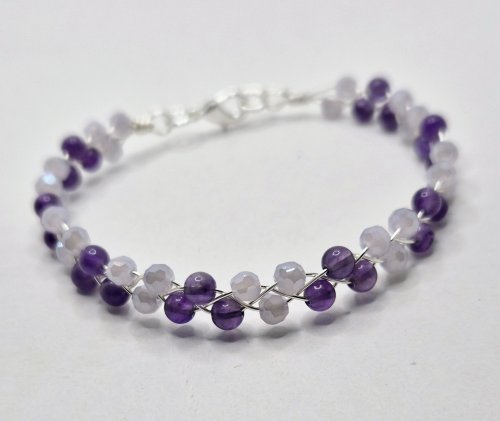 Braided Bracelet
Braided Bracelet
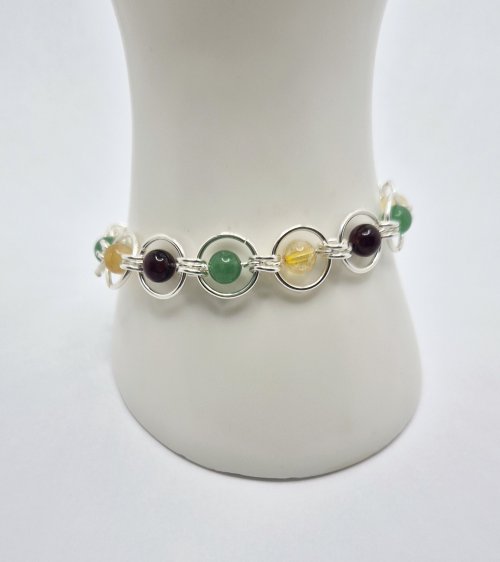 Fall Into Chainmaille
Fall Into Chainmaille
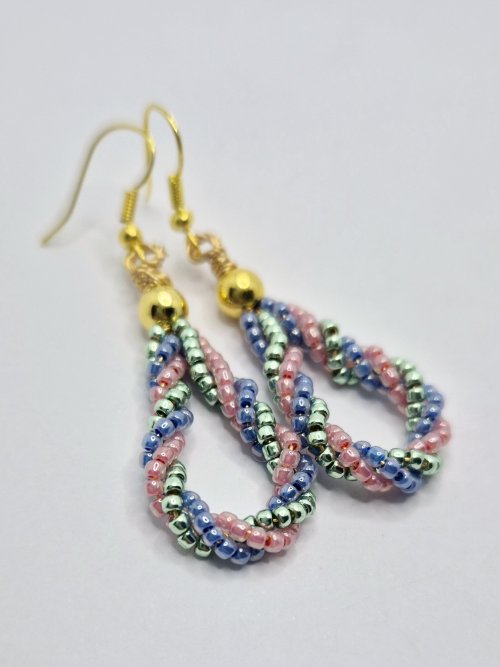 Twisted Seedbead Earrings
Twisted Seedbead Earrings
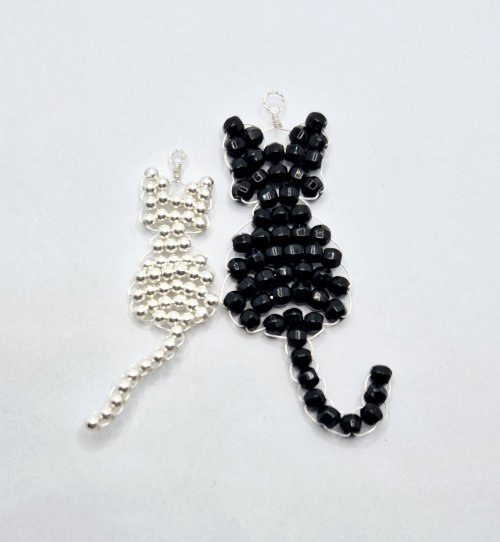 The Purrfect Feline Pendant
The Purrfect Feline Pendant
 Right Angle Weave Memory Bangle
Right Angle Weave Memory Bangle

